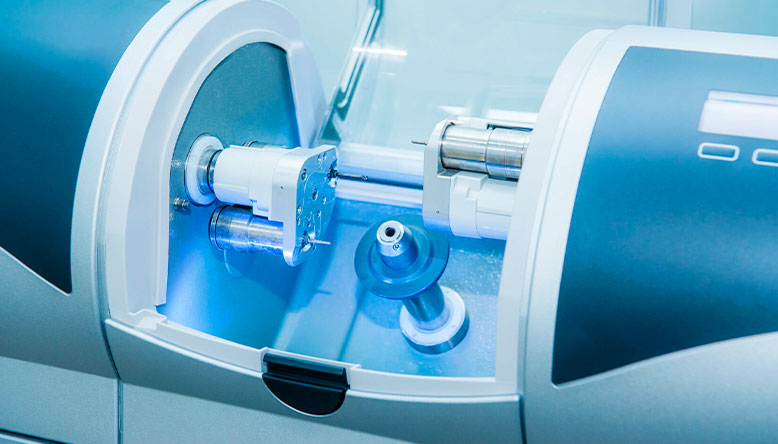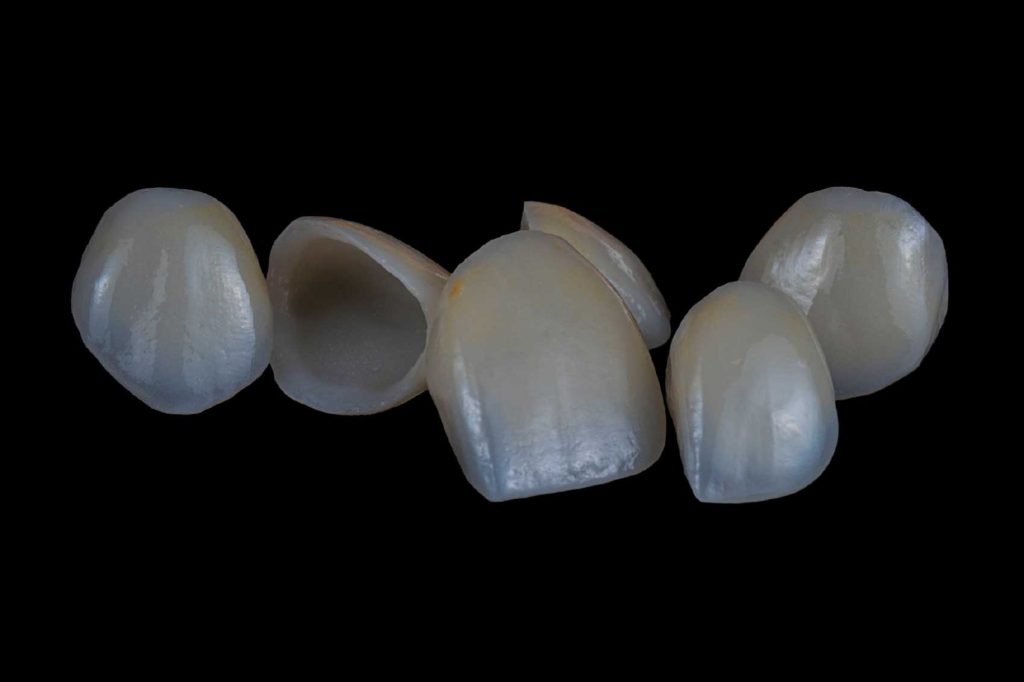CAD CAM TECHNOLOGY
and Dental Crowns
Computer Aided Design / Computer Aided Manufacturing

Dental Crowns
State-of-the-Art Restoration and Aesthetics

Dental crowns are an innovative and aesthetic solution for restoring damaged teeth, whether due to endodontic treatment or for aesthetic purposes. These restorations not only improve the function and appearance of the tooth, but also provide a durable and high-quality solution.
CAD CAM Manufacturing Process
The manufacturing process of dental crowns has evolved thanks to CAD CAM technology (Computer-Aided Design and Computer-Aided Manufacturing), which allows for exceptional precision and personalized results. First, a digital impression of the prepared tooth is taken using state-of-the-art intraoral scanners. Then, specialized software is used to design the dental crown virtually, ensuring a perfect fit and natural aesthetics. Once the design is completed, the crown is automatically manufactured using a CNC milling machine, using high-strength ceramic materials. Finally, the crown is placed over the prepared tooth using dental adhesive.
Patient FAQs:
It is essential to maintain good oral hygiene by brushing twice a day and using dental floss daily. Avoid sticky or hard foods that could damage the crowns.
You can eat most foods with dental crowns, but it is advisable to avoid chewing on ice, hard candies, or nuts that could damage them.
With proper care and regular dental visits, dental crowns can last many years, even decades, but depends on the habits from patients.
It should not be painful, as it is performed under local anesthesia to ensure your comfort.
The complete process usually requires two visits: one to prepare the tooth and take the digital impression, and another to place and adjust the manufactured crown.
Benefits of Dental Crowns:
- Restoration of chewing function and dental aesthetics.
- Long-term protection of the natural tooth.
- Strength and durability.
- Improvement in patient confidence and self-esteem.
Dietary Recommendations:
It is recommended to avoid extremely hard or sticky foods that can damage dental crowns. Some recommended foods include soft fruits, cooked vegetables, and tender meats. Maintaining a balanced diet and avoiding the habit of biting hard objects can help prolong the lifespan of your dental crowns.
In summary, CAD CAM dental crowns represent an advanced and aesthetic solution for restoring damaged teeth, offering precise and long-lasting results. With proper care, these restorations can provide a healthy and natural smile for many years.
CAD/CAM Technology in Dentistry:
A Revolution in Precision and Efficiency
CAD/CAM (Computer-Aided Design/Computer-Aided Manufacturing) technology has revolutionized modern dentistry, offering unprecedented precision and efficiency in dental treatments. This advanced technology enables the digital design and fabrication of dental restorations such as crowns, bridges, veneers, and prostheses with accuracy and speed that surpass traditional methods.
Benefits of CAD/CAM in Dental Clinics
Enhanced Precision: CAD/CAM technology significantly improves the accuracy of restorations, ensuring a perfect fit and superior aesthetics. By reducing the margin of human error, this technology guarantees that each fabricated piece fits optimally with the patient’s anatomy.
Reduced Treatment Time: The CAD/CAM process notably shortens treatment time. What previously required multiple dental visits can now be completed in a single session, thanks to the ability to design and fabricate restorations on-site. This not only enhances the patient experience but also optimizes the clinic’s efficiency.
Durability: Another key advantage is the durability of restorations produced with CAD/CAM. High-strength materials, such as advanced ceramics, offer longevity and resistance that extend the life of the restorations, providing patients with reliable and long-lasting solutions.
Commitment to Innovation: Integrating CAD/CAM in dental clinics reflects a commitment to innovation and excellence in dental care, positioning the clinic at the forefront of contemporary dentistry. This technology not only improves clinical outcomes but also elevates patient satisfaction, solidifying the clinic’s reputation as a leader in the sector.
Conclusion
In summary, adopting CAD/CAM technology in dental clinics offers undeniable benefits, from enhanced precision and efficiency to an improved patient experience. It reaffirms the commitment to excellence in dental care, ensuring superior results and greater satisfaction for patients.
